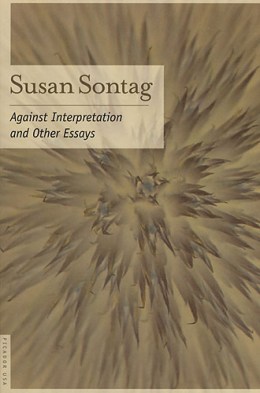
Among her many identities — novelist, playwright, film director and human-rights activist — Susan Sontag was perhaps most widely known as a searing intellectual. Her first work of nonfiction, Against Interpretation, published in 1966, was a sweeping assessment of art and contemporary culture — as well as an instant classic. With her insatiable appetite for creativity in all its forms, Sontag produces a collection of essays that is an ambitious work. Discussing everything from Sartre to camp, Godard to science fiction — the highbrow-lowbrow distinction wasn’t one that Sontag was concerned with — the book aimed to be a critique of modern thinking about art. In the title essay, Sontag makes the case against overintellectualizing art. Rather than dissect art and its context and consequently eviscerate its beauty, she argues that the beauty of art should be appreciated for what it is. The book was an immediate hit and established Sontag as an influential cultural critic.
